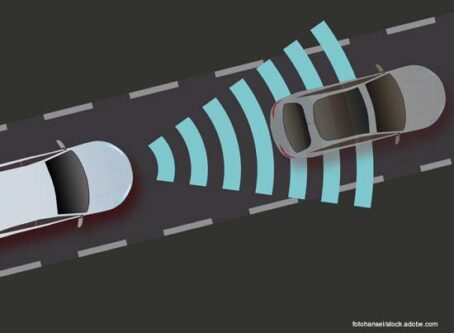Group that includes Cummins, Ford deviates from industry on EPA’s emission standards
A coalition consisting of BorgWarner, Cummins, Eaton and Ford wants the U.S. Environmental Protection Agency to move forward on a final rule that will set stringent emission standards on trucks, while other manufacturers are more critical of the rule.
On Tuesday, Feb. 6, the Heavy-Duty Leadership Group announced that it is urging the EPA to finalize its Greenhouse Gas Emissions Standards for Heavy-Duty Vehicles – Phase 3 rule by March 31.
The EPA’s proposed truck emission standards would require more stringent standards for model year 2027 vocational vehicles and day cab tractors. Those standards would be increasingly more stringent from model year 2028 through 2032. The rule would require a quarter of new sleeper cab tractors sold in the U.S. to be zero-emission by model year 2032.
Commonly referred to as “zero-emission” trucks, electric and hydrogen-fueled trucks are actually “zero-direct-emission” vehicles, as defined by the Department of Energy. Although emissions measured on a tailpipe basis (direct) may be zero, emissions related to battery production, distribution, recycling and disposal do not have a net-zero result.
The group also wants the EPA to oppose any provision that may delay compliance timelines based on infrastructure needs.
Several stakeholders, including the Truck and Engine Manufacturers Association, are concerned about the lack of infrastructure needed to deploy zero-emission trucks. Addressing that issue, they want to tie any emission standard mandate to developments in necessary infrastructure, including charging stations.
“Cummins supported EPA’s heavy-duty GHG Phase 1 and Phase 2 rules through the Heavy-Duty Leadership Group,” Shelley Knust, Cummins’ vice president of product compliance and regulatory affairs, said in a statement. “We are stepping up – once again – to join the group to support EPA finalizing a tough, clear and enforceable Phase 3 final rule. Phase 3 will provide the regulatory certainty needed to drive industry-wide investment to deliver our next generation of decarbonization technologies.”
Criticism of emission standards from other manufacturers
The Heavy-Duty Leadership Group’s support for the EPA’s truck emission standards deviates from some of the industry’s biggest names in manufacturing.
Most notably, the Truck and Engine Manufacturers Association has been a vocal critic of the proposed emission standards. Association members include Caterpillar, Daimler Trucks North America, General Motors, Navistar, Paccar and Volvo Group North America.
In testimony submitted in May 2023, the association emphasized the lack of needed infrastructure as being the biggest hurdle in zero-emission truck adoption.
“Unlike previous technology-forcing rules, the challenge is not in forcing the development of zero-emission vehicles and powertrains; the challenge is forcing the development of the infrastructures needed to recharge and refuel them,” the association said. “Without electricity recharging and hydrogen refueling infrastructures in place, our customers are not likely to make the needed investment to purchase the zero-emission vehicles that (Truck and Engine Manufacturers Association) members will have for sale.”
Mixed signals
Despite its criticism of the EPA’s proposed emission standards, the Truck and Engine Manufacturers Association has been supportive of the general goal of the proposed rule. That general commitment toward zero-emission trucks has caused some members to diverge from some of the group’s stances on government mandates.
One glaring deviation is from Cummins, which is a member of the Truck and Engine Manufacturers Association and the Heavy-Duty Leadership Group. By aligning with the latter, Cummins appears to take a stance much different from other manufacturers in the former association. Cummins could not be immediately reached for comment.
In May 2022, the Truck and Engine Manufacturers Association filed a lawsuit against the California Air Resources Board’s new emission standards. Specifically, the association argued that the new rule did not give manufacturers enough time to comply. However, Ford and Cummins both publicly stated that they did not support the lawsuit. Just a few months after it filed the lawsuit, the Truck and Engine Manufacturers Association withdrew the complaint.
This past July, the association, Ford, Cummins and other leading manufacturers reached a deal with California to meet the state’s zero-emission standards. Called the Clean Truck Partnership, the manufacturers are committed to meeting California emission standards regardless of any challenges to the state’s ability to set those standards.
Other stakeholders weigh in
While lawmakers also have been split on the EPA’s emission standards, the trucking industry has been mostly united in its criticism.
Last November, Sens. Alex Padilla, D-Calif., and Sheldon Whitehouse, D-R.I., voiced their support for the EPA’s proposed emission standards, urging the agency to move quickly on finalizing the rule. In September, 80 Democrat federal lawmakers sent a letter to the EPA, which also called for expediting the rulemaking process.
However, more than 30 members of Congress from both sides of the aisle have expressed concerns over the proposed emission standards. Those lawmakers have called the rulemaking process rushed.
The Owner-Operator Independent Drivers Association and the American Trucking Associations have submitted comments opposing the emission standards. Although both associations support cleaner truck technology, they believe the EPA’s proposed timeline is not feasible.
“Professional drivers are skeptical of (electric vehicle) costs, mileage range, battery weight and safety, charging time and availability,” OOIDA President Todd Spencer said in a statement. “It’s baffling that the EPA is pushing forward with more impractical emissions timelines without first addressing these overwhelming concerns with electric (commercial motor vehicles). The pursuit of this radical environmental agenda in conjunction with an anticipated speed limiter mandate will regulate the safest and most experienced truckers off the road.” LL









